Free download: Top 10 Natural & Easy Remedies for Joint Pain from Home. Learn these helpful remedies.
Estimated Reading Time: 6 minutes read
Ah, the elbow – that trusty joint that lets you wave hello, pick up your grandkids, and sip tea like royalty. But what happens when your elbow starts acting up and causing you pain? Don’t worry; we’ve got you covered!
In this article, we’ll explore Posterior Impingement Syndrome, a condition that can cause discomfort and limit your elbow’s range of motion. We’ll also provide some helpful tips and exercises to help you get back to your pain-free, elbow-bending best! So, let’s dive in and give that elbow the tender, loving care it deserves.
Table of Contents
What is the Posterior Impingement of the Elbow?
Posterior Impingement Syndrome is like the uninvited guest at your elbow’s party. It occurs when the bones and soft tissues at the back of the elbow joint become irritated or pinched. This can cause pain, swelling, and limited mobility – all things we’d rather avoid in our golden years.
The good news is that with the right approach, you can show this pesky condition the door and get back to enjoying your favorite activities, whether that’s playing bridge, knitting, or perfecting your golf swing.
Anatomy of the Elbow
Think of the elbow as a well-oiled machine with multiple parts working together in harmony. The elbow joint is where three bones – the humerus, radius, and ulna – come together, creating a hinge that allows you to bend and straighten your arm.
Muscles, ligaments, and tendons also work behind the scenes to provide stability and movement. But like any machine, sometimes things can go awry, and when that happens, you might find yourself dealing with conditions like Posterior Impingement Syndrome. But don’t worry; we’re here to help you get your elbow back in tip-top shape!
Causes of Posterior Impingement of the Elbow
So, what’s causing all the trouble in elbow paradise? There are a few potential culprits behind Posterior Impingement Syndrome:
- Overuse or repetitive motions (think tennis, golf, or even gardening marathons)
- A direct blow to the elbow (watch out for those doorframes!)
- Age-related wear and tear (hey, nobody said getting older was easy)
- Inflammatory conditions like arthritis
Understanding the cause of your elbow pain is the first step towards finding the right treatment and getting back to doing the things you love without wincing every time you bend your arm.
Signs and Symptoms of Posterior Impingement of the Elbow
Wondering if your elbow troubles might be a case of Posterior Impingement Syndrome? Here are some common signs and symptoms to look out for:
- Pain at the back of the elbow, especially when bending or straightening the arm
- Swelling or inflammation in the affected area
- A feeling of instability or “giving way” in the elbow joint
- Limited range of motion, making everyday activities more challenging
If these symptoms sound all too familiar, it’s time to seek professional advice and get to the bottom of your elbow woes.
Diagnosis of Posterior Impingement of the Elbow
To diagnose Posterior Impingement Syndrome, your doctor will likely put your elbow through its paces with a series of physical tests. They might also use imaging techniques like X-rays, MRIs, or ultrasounds to get a closer look at what’s going on inside that joint of yours. With a proper diagnosis in hand, your doctor can help you develop a game plan to tackle the pain and get your elbow back in fighting shape.
Exercises for Posterior Impingement of the Elbow
Gentle exercises can strengthen the muscles around your elbow and improve flexibility. Here are a few to try:
1. Isometric Elbow Flexion
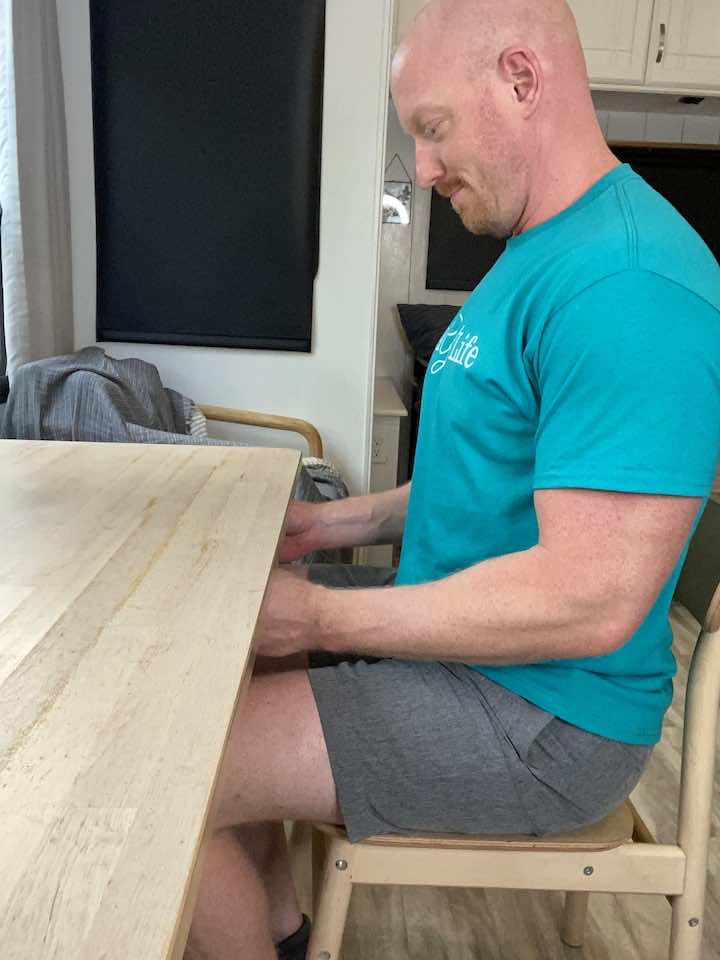
- Sit up straight at a table with your hands placed underneath, palms facing up
- Raise your hands straight up as if you’re trying to lift the table
- Hold this position for 5 seconds
- Release and repeat the movement 10 times
- This exercise helps to strengthen the muscles supporting your elbow joint and improve its stability.
2. Isometric Elbow Extension
- Sit straight at a table with your hands on the surface, palms facing down.
- Push your hands down on the table as if trying to push it away.
- Hold this position for 5 seconds.
- Release and repeat the movement 10 times.

3. Tricep Stretch


- Either sit or stand and bend the elbow on the side you intend to stretch.
- Raise the elbow so that it’s pointing towards the ceiling.
- Take the opposite hand and grab the raised elbow.
- Gently pull back on the elbow until a stretch is felt in the triceps muscle.
- Hold the stretch for 30 seconds.
- Repeat this stretch for a total of 3 times.
4. Ulnar Nerve Glides
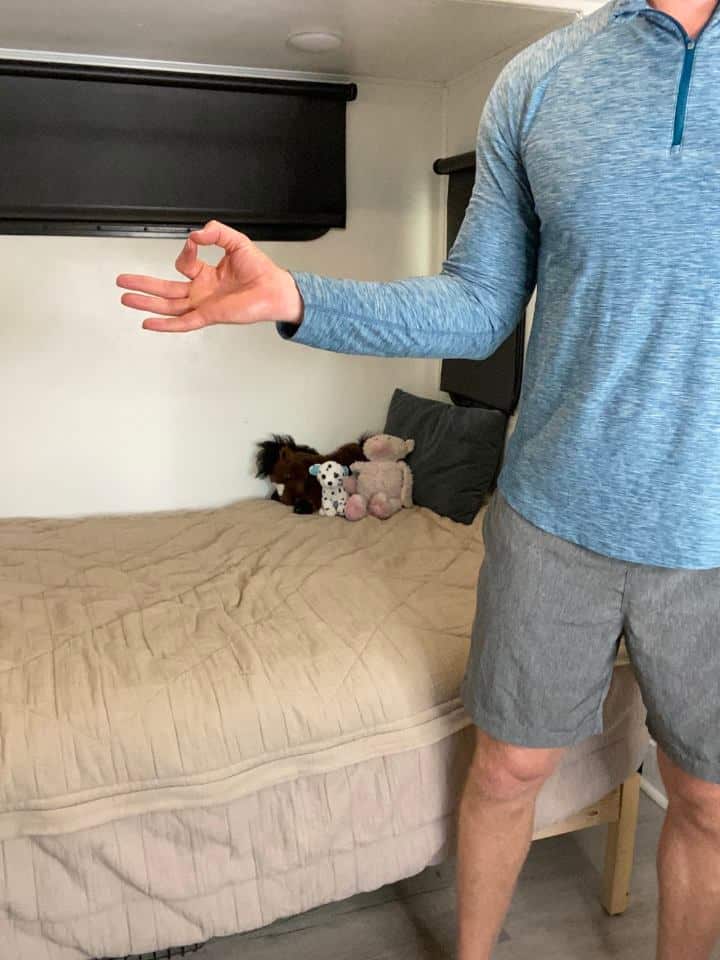
Step 1: Your starting position will be holding your arm out to the side and gently bend the elbow. Make a circle with your thumb and index finger touching as if you’re saying you’re “A-okay.” Your palm should be facing out to the side, away from you.
Step 2: Begin to move the hand towards your head while extending the wrist back towards you. Make sure to keep your “A-okay” sign. The fingers should now be pointing towards you with the palm facing the ceiling.


Step 3: From here, bend the neck so that your head moves away from the working arm.
Step 4: To add an extra stretch to the nerve, slightly lift your bent elbow up towards the ceiling.

As your pain starts to subside and your elbow begins to feel better, you can gradually introduce these additional exercises into your routine to further enhance your recovery and maintain joint health.
5. Bicep Curl
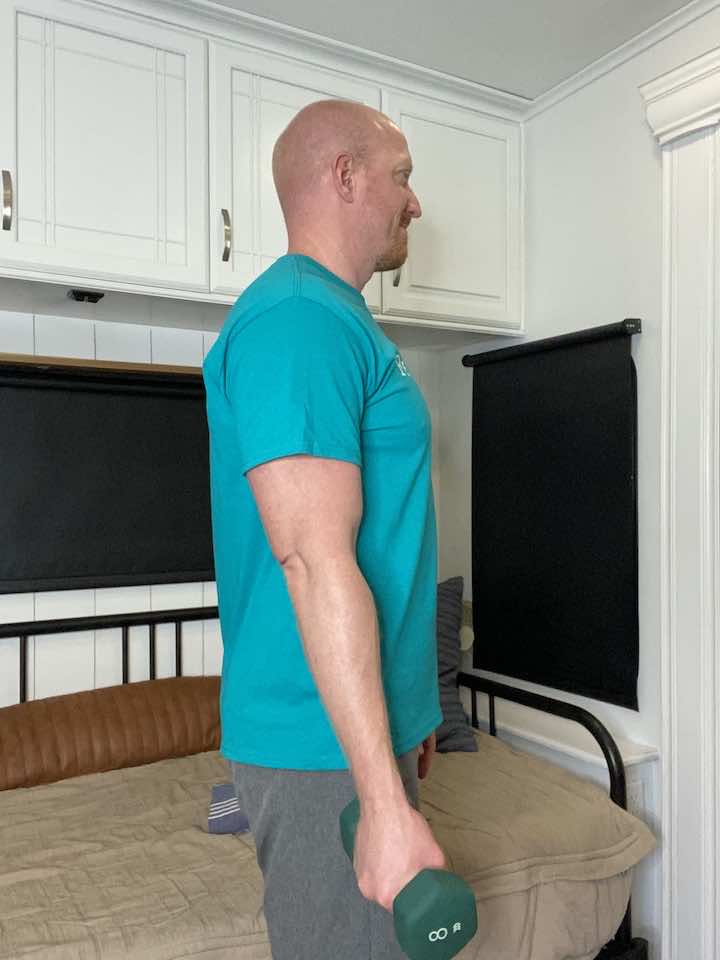
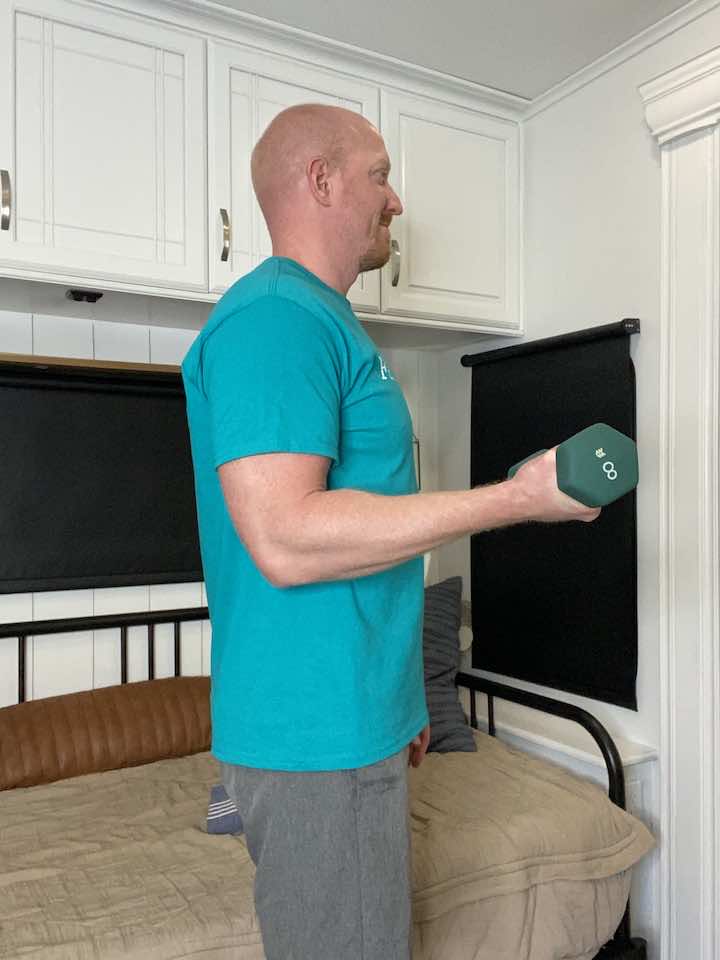
- Begin standing with your feet shoulder-width apart, and your knees slightly bent.
- Hold a dumbbell in each hand with your palms facing forward and arms fully extended at your sides.
- Slowly bend your elbows, curling the dumbbells towards your shoulders while keeping your upper arms stationary.
- Pause briefly at the top of the movement, then slowly lower the dumbbells to your starting position.
- Repeat for 10 repetitions for 3 sets.
6. Tricep Overhead Extension
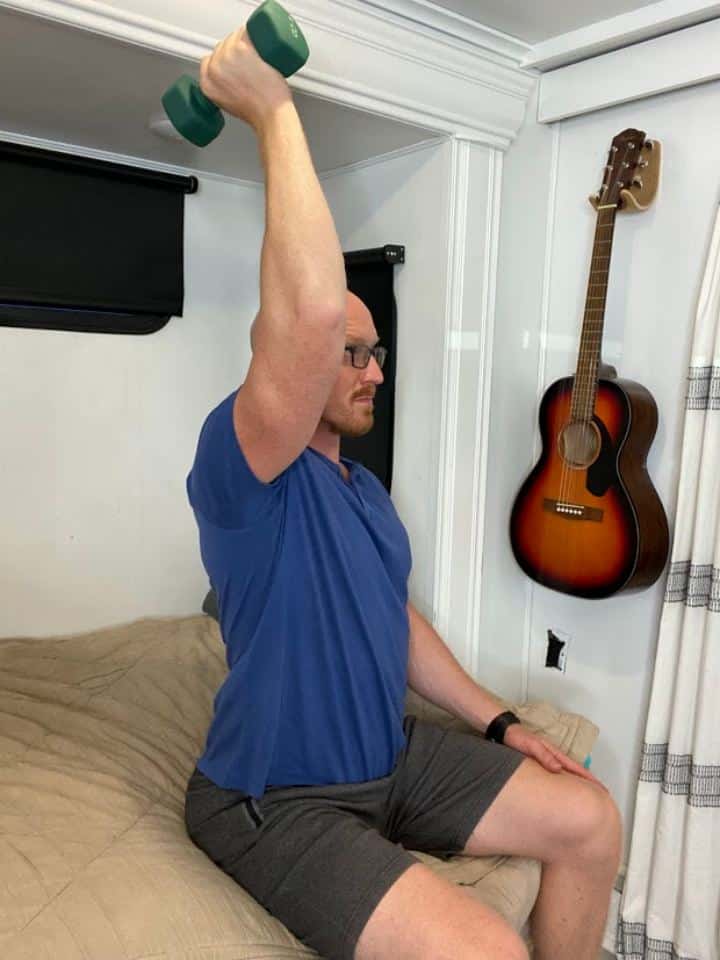
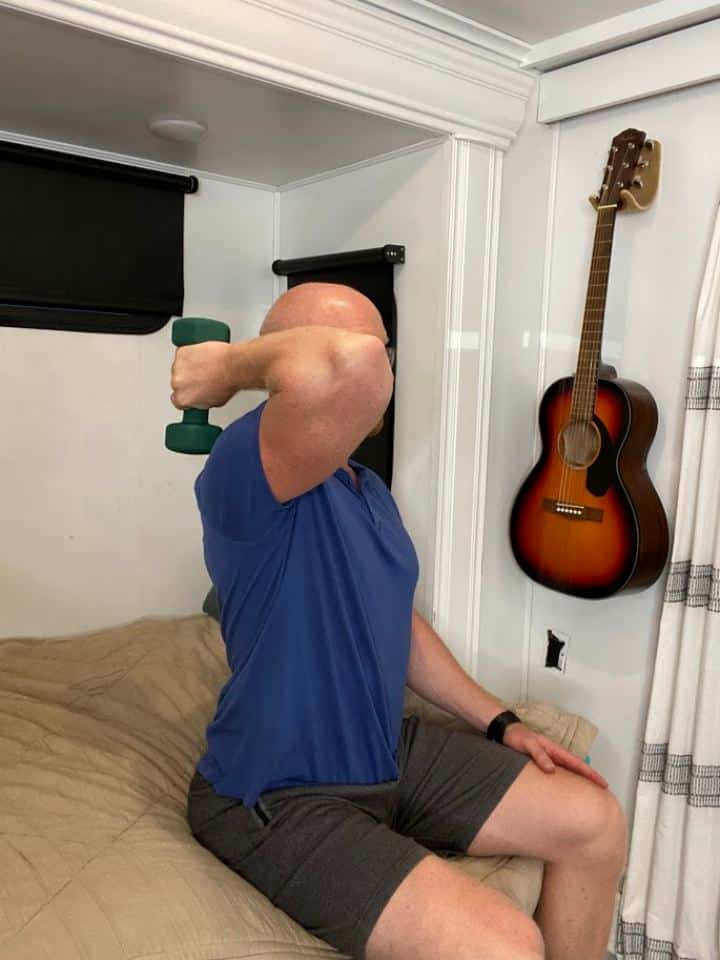
- Position yourself either standing or seated, holding your free weight by your side.
- Raise the arm overhead, with the elbow remaining in a bent position.
- Slowly extend and straighten the elbow as far as you can, then return to the bent position (keep the arm overhead).
- Repeat 10 repetitions for 3 sets.
7. Forearm Pronation
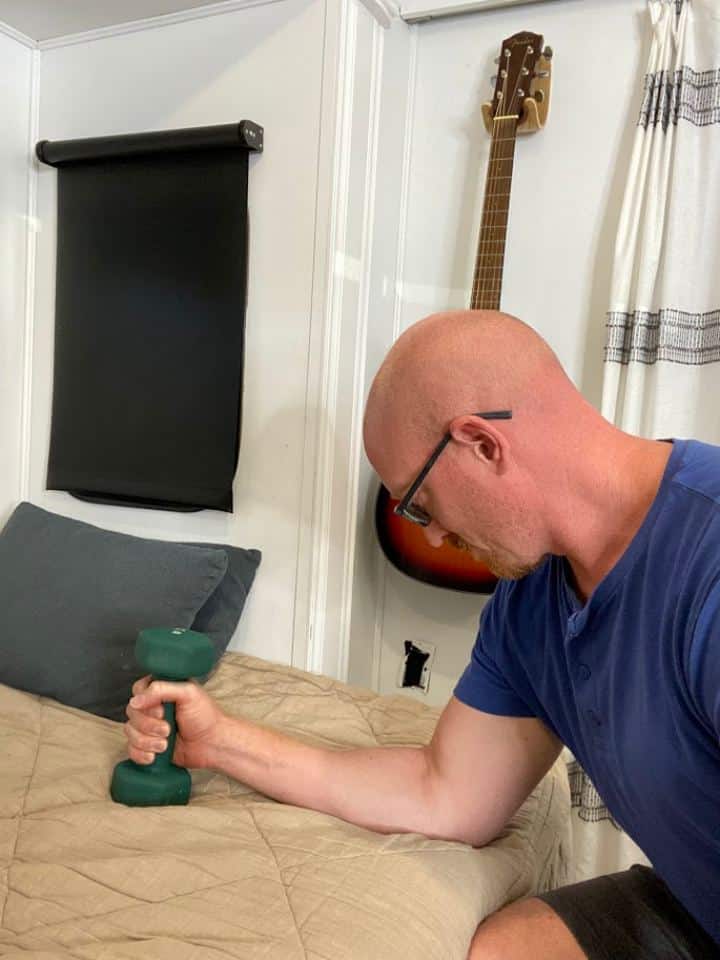
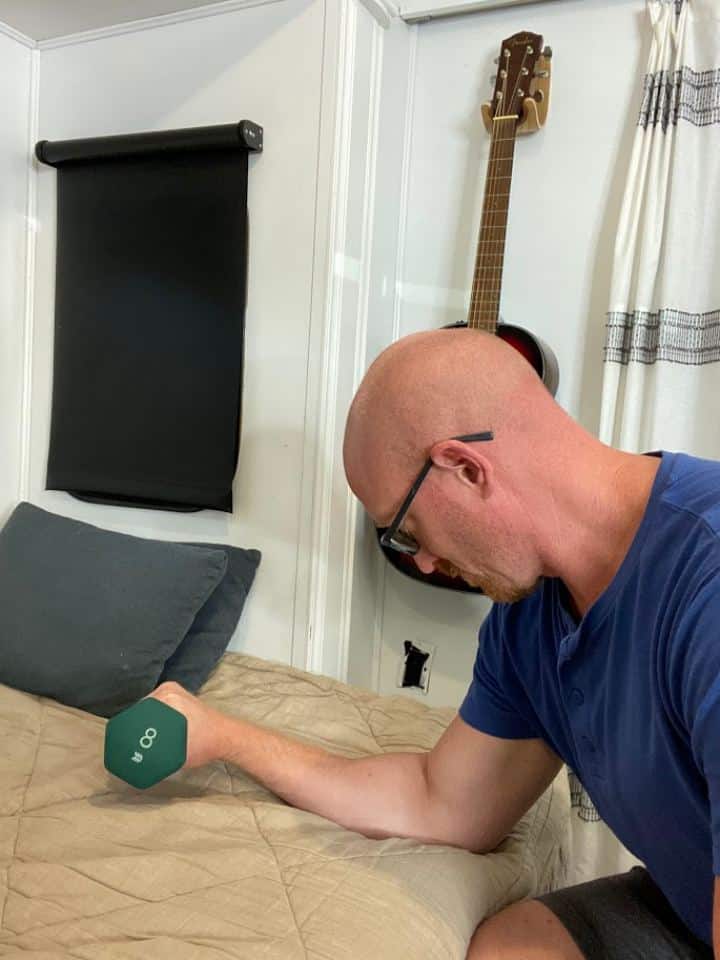
- Begin seated in a chair with the elbow supported on a surface (e.g., kitchen table).
- Position the forearm and wrist so that the thumb is facing the ceiling.
- Slowly turn the forearm until the palm faces down towards the surface, then return to your starting position.
- Repeat 10 repetitions for 3 sets.
8. Forearm Supination
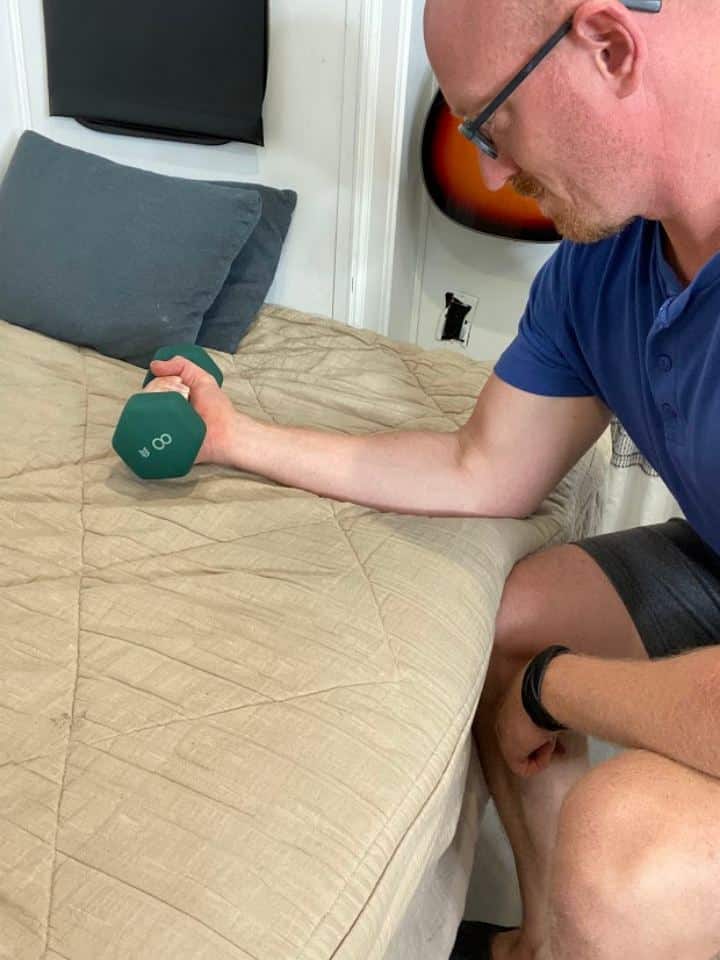
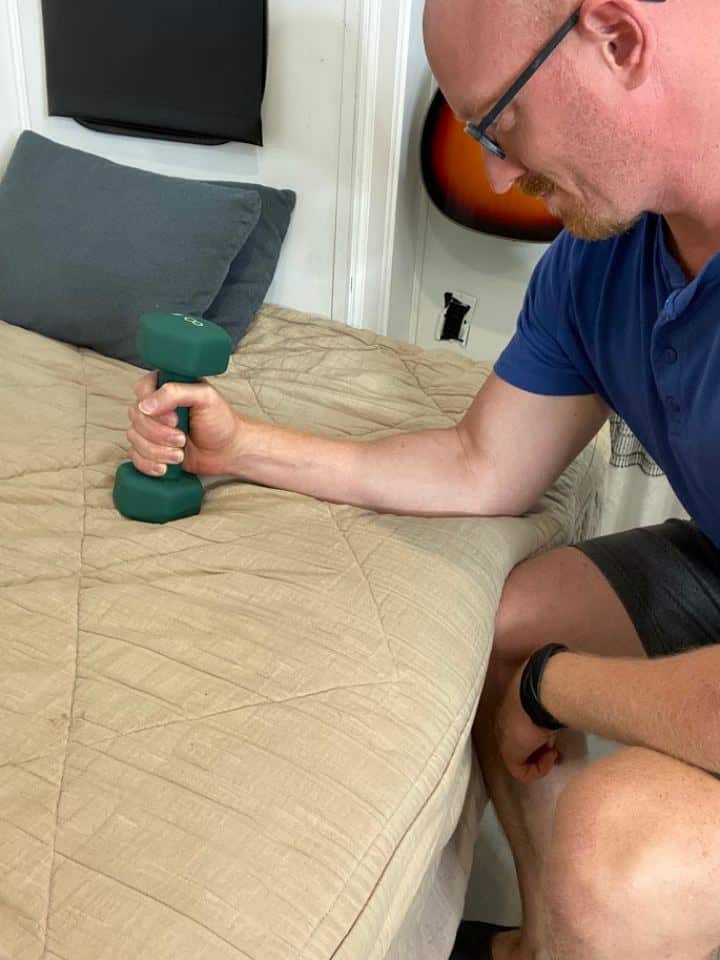
- Begin positioned just like you were for forearm pronation.
- This time, slowly turn the forearm until the palm faces up towards the ceiling, then return to your starting position.
- Repeat 10 repetitions for 3 sets.
Conclusion
Posterior Impingement Syndrome might have thrown a wrench into your elbow’s plans, but with the right treatment and some perseverance, you can get back to living life without that nagging pain. So go ahead, pick up that grandkid or swing that golf club with confidence, knowing that your trusty elbow is ready for action!
Remember, always consult with your doctor or healthcare professional before starting any new treatment plan. They’ll help you navigate the world of elbow care and ensure you’re on the path to a pain-free future.













